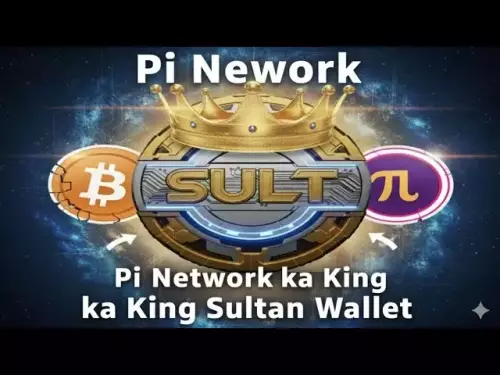
Pi Network, Digital Currency, and Economic Reality: Navigating the Decentralized Future
The world of finance is changing, and Pi Network is positioning itself at the forefront. This blog post examines the network's progress, its take on digital currency, and its place in our economic future.
The Shift Away From Traditional Finance
Cash is losing its grip, and debt-based systems are showing cracks. As traditional finance falters, decentralized solutions like Pi Network are gaining traction. Pi Network offers infrastructure designed for decentralized participation, boasting millions of verified pioneers.
Pi Network's DeFi Leap: Testnet Launch
Pi Network has officially entered the decentralized finance (DeFi) arena with the launch of its DEX, AMM, and liquidity pools on Testnet. This milestone marks a significant step toward building a utility-driven Web3 ecosystem. With token swaps, liquidity provisioning, and token creation now available in a safe testing environment, developers and pioneers can explore the future of finance without risk. The initiative reinforces Pi Network’s commitment to transparency, decentralization, and real-world application.
Key Components of Pi Network's Ecosystem
Pi Network's ecosystem is built on several core components:
- Pi Wallet: Secure asset management.
- Pi Browser: Access to decentralized applications.
- Smart Contracts: Automation and compliance.
- KYC Protocols: Verified identity and trust.
- PiUSD: Stable and treasury-backed transactions.
These tools enable real economic activity without relying on cash or centralized intermediaries.
Picoin: Utility Over Speculation
Unlike many cryptocurrencies driven by speculation, Picoin is designed to represent contribution, identity, and utility within the Pi ecosystem. Its value is derived from real-world use, not market manipulation. Utility highlights: Peer-to-peer transactions across borders, merchant adoption for goods and services, integration with decentralized applications, governance participation through Pi Vote. This model ensures that Picoin reflects actual economic behavior, not speculative trends.
The EU's Digital Currency Ambitions and Pi Network's Role
While Pi Network advances its decentralized vision, global players are also making moves in the digital currency space. The European Union, for example, is exploring a digital euro to protect its monetary sovereignty. While aiming to compete with dollar-backed stablecoins, the EU's initiatives highlight the growing importance of digital currencies in the global economy. Pi Network, with its decentralized approach, offers an alternative model that emphasizes community-driven utility and accessibility, potentially complementing or even challenging these centralized efforts.
Strategic Implications and the Future of Finance
The rise of Pi Network and the decline of traditional financial systems have profound implications. Decentralization is becoming less of an option and more of an inevitability. Institutions, governments, and individuals must adapt to a landscape where blockchain-based financial tools and inclusive economic models are the new standard.
Final Thoughts: Embracing the Decentralized Revolution
The financial world is evolving, and Pi Network is at the forefront of this change. Whether it's through DeFi tools, a utility-driven currency, or a commitment to decentralization, Pi Network is shaping the future of economic reality. So buckle up, Pioneers – the future isn't built on paper; it's built on participation, transparency, and technology!

















































![🚨IS VECHAIN (VET) A DEAD COIN ?? PRICE ANALYSIS [GET READY NOW] 🚨IS VECHAIN (VET) A DEAD COIN ?? PRICE ANALYSIS [GET READY NOW]](/uploads/2025/10/09/cryptocurrencies-news/videos/vechain-vet-dead-coin-price-analysis-ready/68e7b200b067b_image_500_375.webp)



































